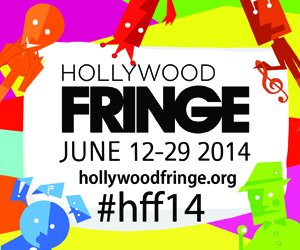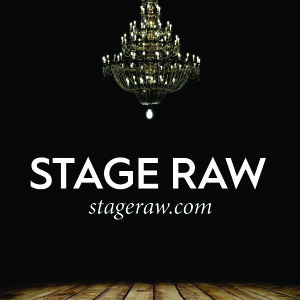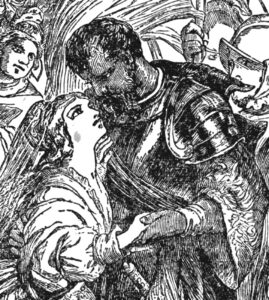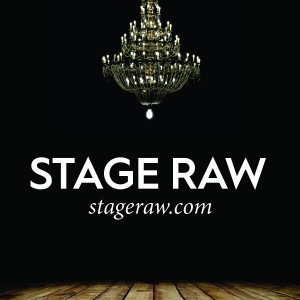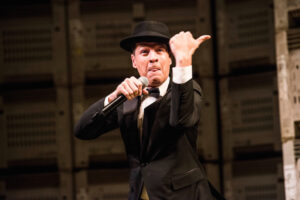Our Love Is Here to Stay
The Hollywood Fringe – then and now
By Ashley Steed
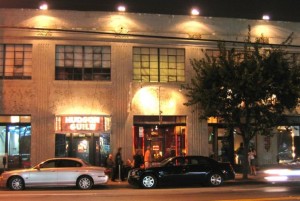
Four years ago, after the inaugural Hollywood Fringe Festival, I wrote a piece for LA Stage about the experience. Using the stages of love as metaphors for my (and hopefully the greater LA theater community’s) experience and relationship towards Fringe, I predicted that this was a true love, and one that would grow. Just after the first Fringe, I moved to London and only recently moved back to Los Angeles — thus missing its evolution. I returned to the Fringe for its fifth anniversary with clear memories of that magical first year.
So, in continuing with the stages of love theme, is the Hollywood Fringe Festival a life-long love, or has it waivered? Well, that first year I said that in order for HFF to last, it would only do so with passion and commitment -– not just of the amazing staff (Ben and Stacy Hill, et al) but also of the greater Los Angeles theater community. That passion and commitment have grown, which is how I know this love is here to stay.
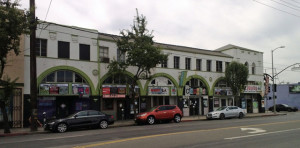
There are noticeable differences since the first year, so here are a few things worth noting.
Previews
This definitely helps shows get their footing, but reviewers should take them with a grain of salt. I saw many previews that were simply not ready; in contrast, shows that had great previews got word-of-mouth momentum behind them.
My advice to performers – treat previews as an opening, be sure it’s the best you can make it. You want to get a buzz started immediately. A bad preview can greatly hinder your fringe success. If you really need to test it out on a preview audience, test it before fringe. Women came in after successfully performing in New York and thus were well prepared (along with other things, this is one reason why it won so many awards).
Tent
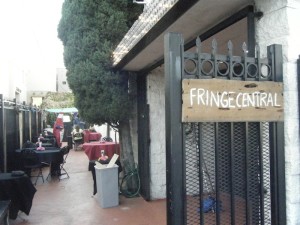
The first year we had a narrow outdoor area with a tiny bar setup in the corner and about 6 small tables. I even found a picture of it on the Internet. In 2014, the bar was much larger and more seats that often fill up, and a tent to house the Fringe Cabaret. I’ve heard stories of the magical year of the tent of 2011 so I’m not sure how this one does in comparison, but I was a fan.
Audiences
Audiences – We have them! Well, they’re growing. I think there was only one show where there was just a handful of us. The vast majority of the time, houses were nearly full. Granted there were many fringe participants doing comp swaps so many audiences were comprised of other Fringers. However, I definitely remember times the first year being the only one or one of two in the audience, so this is a huge improvement and one that needs to keep growing.
Youg(ish) People
Not only were there a lot of young audiences but the vast majority of the performers/Fringers where young companies. This is why I love fringe festivals; it gives young/new companies a chance to test the waters, to present new ideas. If they fail, oh well. If they succeed, it’s a great launching pad.
Technology
Smart phones weren’t as common in 2010. I certainly didn’t have one and it was during the first Fringe that I got into twitter. Now everyone has a smartphone and twitter is substantially more popular, I’ve definitely noticed a difference in people’s approaches to social media. Many of the shows I saw were simply because I was invited via twitter. Or some shows had a huge amount of buzz on the #hff14 hashtag so I would get tickets.
It is also nice that for the fifth year, Ben Hill introduced an app. I had time to kill in between shows, so looked at the app to what was playing at that moment nearby and thankfully stumbled upon a great show. I was also able to easily read reviews while out and about and I could look up where a venue was.
The Shows
There was a noticeable difference in the types of shows on offer. The first year, the vast majority were established (mostly autobiographical) solo shows. We then, surprisingly had quite a number of international folks coming from the UK, New Zealand and Australia. In other words – people who do multiple fringe circuits. There was a handful of ensemble work, but not much. There were also very few LA based companies – the ones that started at the first fringe have gone on to be respected practitioners in Los Angeles.
This year, ensemble companies dominated and LA based practitioners were in abundance. Even the solo shows I saw used the medium in new and inventive ways. This to me suggests a wave of young practitioners dedicated to the craft and who are looking for different ways to tell stories (while making it work on a shoestring budget). I foresee the fringe becoming a breeding ground for innovative work.
Losses
On a sadder note, where people have had time to adjust, I feel I’ve had to catch up – the first time I saw the sign for Bryan’s Bar at Fringe Central, I had a moment of silence to remember Bryan Burgess (in whose honor the bar is named, and who suddenly died at the end of the first Fringe). I wasn’t close to him but most definitely missed his presence. His grinning face was always a joy to see behind that first tiny Fringe bar.
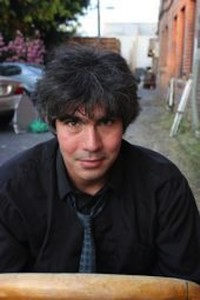
Likewise, my dear friend, mentor and much-loved champion of LA theater, Lee Melville – who died last year – was also sorely missed. He had been my main theater buddy the first fringe; he’s also the reason why I’m a writer. You never realize how distance affects mourning until you’re thrust back into the place where memories are harbored.
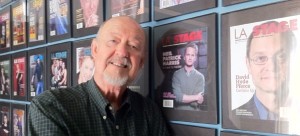
Venues
Most of the venues are the same however, there’s a noticeable difference between them. The venues/producers that actively support and promote their shows and that offer a variety do the best. The first year, the godfather of the Fringe, Ezra Buzzington, programmed Theatre of NOTE very intently and had a huge success. This year Theatre Asylum and Schkapf had a steady flow of shows and queues of audiences.
A new venue of note is the bar and stage, 3 Clubs. The Fringe needed a great cabaret space and I’m so glad they stepped up to the challenge. There will be some Fringe Encore performances there so definitely go check them out.
Now onto my favorite aspect of the Hollywood Fringe Festival:
Community
For previews week I was greeted with hugs and “welcome backs.” Most of my Fringe friends haven’t seen me since that first year, so the first week was mainly one ongoing reunion. I said that I had made lifelong friendships (or Fringeships) that first year, and the overwhelming enthusiasm for my return is proof.
Throughout this fringe, I continued making new friends and chatting with other artists, many of whom I hope to work with and am excited to see how their careers grow. Nothing gets me more excited than passionate artists, and the Fringe was bursting with them.
Growth
The Fringe is growing, it’s also growing up. Although five years is very young in Fringeland, there’s a noticeable maturity to the festival. The first year had the exuberance of infinite possibilities and the “oh my god we actually made this happen” excitement. There’s still that excitement, but it’s clear the staff have a better grasp of what it takes to run a festival. They’re more confident and yet incredibly humble, as if they still can’t believe that this thing they started is still materializing.
I hope the fringe continues to grow and mature. But I hope it doesn’t get too large, and I don’t think it will. This year, 279 shows were registered. The Edinburgh Fringe had over 10 times that amount last year. I love Ed Fringe, but it simply doesn’t have the same sense of community and fellow participant support that the Hollywood Fringe has. I want the quality and reputation to grow (I’d also like to see more international companies) however I’d like it stay a manageable size that boasts a variety of shows, but still has a community atmosphere where participants actively encourage one another.
For the 2014 festival, I saw 40 shows in 13 days. A few were exceptional, most were note-worthy, and a very small number were duds. I think that’s an excellent ratio. Most importantly, the fringe serves as an energy boost, re-invigorating my passion for theater, as well as this amazing LA theatre community. Most out-of-towners I spoke to commented on the support here and how they now look at LA differently. The Hollywood Fringe proves that we are not just a theater town, but one that actively encourages the performing arts and each other.
